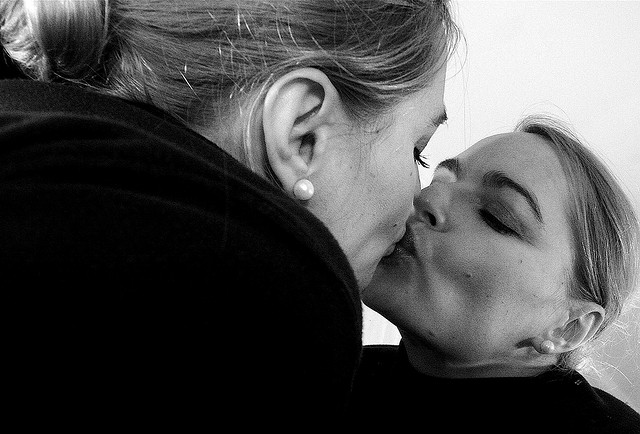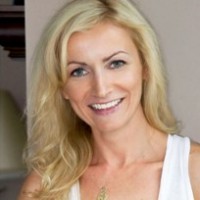Mirror, Mirror on the Wall: Who’s the fairest of them all?
I distinctly recall the moment I first met my reflection; the first time I “saw” myself; the first time I experienced myself not as a formless indwelling being but as “some thing” to be regarded, described, analyzed.
It was summertime, and my sister and I had been summoned indoors for lunch.
I was washing my soil-stained hands in the sink of the downstairs bathroom. Above me, a mottled mirror attached to the ancient, eighteenth century wall of our ancestral home via ornate hinges had been tilted so low that, as I looked up mid massaging a snow-white bar of soap between my sullied palms, I caught sight of my self in the beveled glass.
Mouth agape, I drank in the girl who greeted me: pale, ghostly face inflamed with the rosy glow of a child’s inexhaustible exertion framed by disheveled wheaten tresses all but liberated from their mooring—a lilac ribbon—and anchored by a pair of blue-grey-green eyes peering curiously and intently at themselves.
It was a strangely intimate yet alien moment that would prove a pivotal one.
Prior to this point, I’d lived from the inside out. Life was something observed from an inner world over which I reigned. I didn’t so much think of myself as “pretty” or “pleasing” as I just didn’t think about myself much at all. I was too busy investigating, exploring, and forming impressions about the world without to direct my focus within.
Now, however, I had become the focus of my gaze—and my thoughts.
The late philosopher Terence McKenna described the “linguistic shell of disempowered perception” that occurs when a child first learns language. A winged creature, laments McKenna, ceases to be a “complex wave of the angel peacock iridescent transformative mystery” in the moment a child is taught the word “bird.” In a similar vein, the enormity, complexity and possibility of who “I” am was suddenly emasculated by the lens through which I regarded it.
“I” ceased to be a mystery and instead became a noun delineated by a string of adjectives—pale-skinned, blond-haired, green-eyed—that would form the cornerstone of a manmade self-concept.
In time, I would learn to view myself through the prism of a world that defined what’s “pretty,” “pleasing,” “desirable,” “wanted,” “worthy.” I would learn to spend countless hours obsessing over how I appeared to that world, honing in on every flaw and magnifying each imperfection.
Rather than celebrate what was inimitable, I would learn to lament what was aberrant.
Where once I leaped out of bed and onto the dance floor of life dressed in ebullient excitement, I would learn to tiptoe cautiously, meticulously measuring what I wore—and even how I walked, talked, laughed and cried—in the all-knowing, all-seeing mirror. As if it held the key to my happiness. Like the Evil Queen in Snow White, my mood was dictated by what the Magic Mirror told me. Like Her Highness discovered, there’s always another who’s fairer than them all. Whereas the Queen lured Snow to a sleeping death with a poisoned apple, I envenomed myself with my own acerbic tongue.
Perhaps it was precisely this “disempowered perception” that instigated a torturous bout of adolescent angst. Having lost the awareness of my own namelessness in the moment I identified myself as a noun, I became plagued by the unanswerable question, “Who am I?” It’s little wonder that my once soft, silky locks became a fried, frizzy mess; my once alabaster skin scarred by an angry strain of acne that inflamed not just my face, but my neck, chest and back; and my once soft gaze hardened by the sting of betrayal. For had I not betrayed my self, imprisoning her inside a one-dimensional reflection of what I perceived myself to be. In time, the fleeting glimpse of my unformed self faded into the recesses of my memory.
Until I saw her again.
While attending a women’s empowerment workshop in New York, I was given an assignment: to stand in front of a mirror and hold my gaze for no fewer than ten minutes.
That night, I stood in my bathroom, bare feet savoring the smooth, cool tiles, and steadied myself against the strong, square sink. Slowly, I raised my chin and eventually my eyes. The first few moments felt pointless, self-conscious and silly, but then something astonishing happened: I witnessed myself transform. As my gaze softened, my expression metamorphosed—from analytical to appreciative, from indifferent to intimate, from combative to compassionate.
Eventually, my features dissolved entirely and I found myself magnetized by a pair of eyes that looked both unrecognizable and familiar; both young and ageless; both fierce and loving.
Dark as night; white as snow. Then, the moment passed, the veil descended, and she retreated back to obscurity.
The following day, back at the workshop, we were asked to form two large concentric circles, the inner ring facing the outer, to take one step to our left, stop, and find and hold the gaze of the woman opposite. It was incredibly challenging. My eyes darted from right pupil to left, and back, not knowing on which to settle. Not wanting to settle.
Both my partner and I felt intensely self-consciousness, unnerved by the proximity, the vulnerability, the intimacy the exercise demanded. “Okay, here goes,” I thought. I closed my eyes, took a long, slow breath, fluttered my lids open and let them rest on hers (I chose the right pupil and locked in).
Then, I drew back the drapes, and allowed her in.
Suddenly, her pupils dilated, contracted, and there, in the most unlikely place, I glimpsed her—the stranger from the night before. Somehow, the formless, timeless depthlessness in me had revealed herself in the eyes of another. I could tell my partner was having a parallel experience. We had become each other’s mirrors—offering each other a reflection of our deepest, truest selves.
In that moment, the mirror metaphorically cracked from side to side, and my linguistic shell of disempowered perception shattered. Once again, I came face to face with the nameless mystery seated on the throne of my inner being.
What I learned from the gaze exercise is that a mirror doesn’t so much reveal who I am as reflect what I perceive.
I also learned that the entire world is my mirror. In it, I can perceive aberration or perfection; cruelty or compassion; ugliness or beauty. It’s entirely my choice—and it’s entirely a reflection of my self.
Lastly, I learned that the eyes truly are the windows to the soul, that we all need to practice drawing back the drapes. If only to be reminded of who we really are—the one who watches the watcher.
Because she, or he, is hands down the fairest of them all.
Author: Claire Coghlan
Editor: Renée Picard
Photo: stephanie carter at Flickr







Read 2 comments and reply